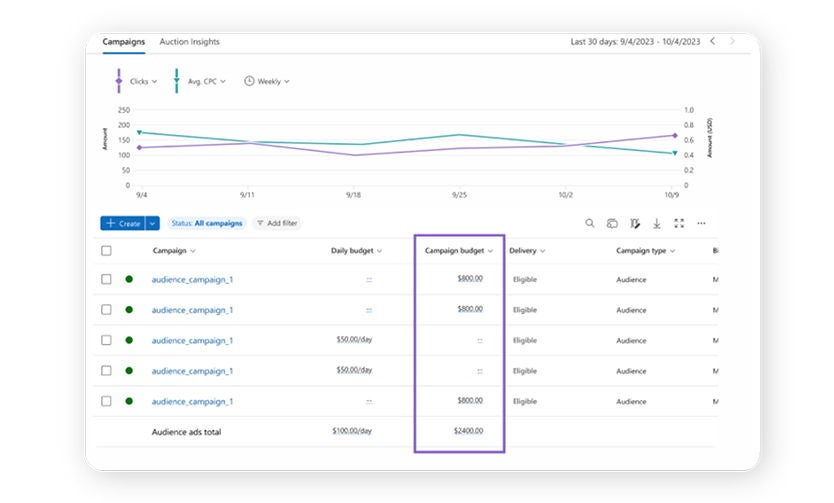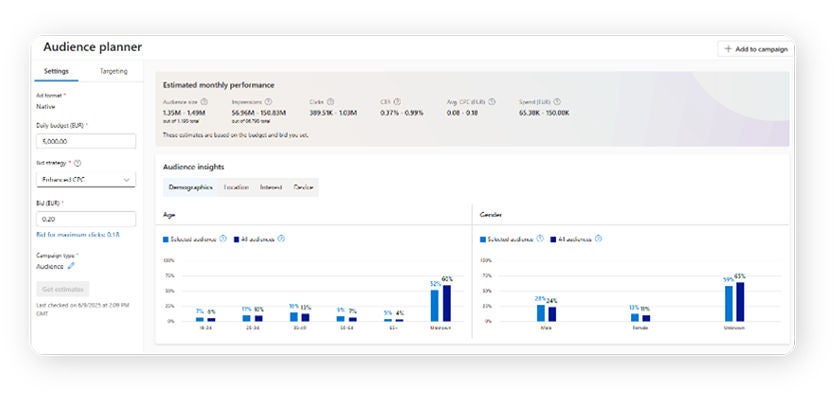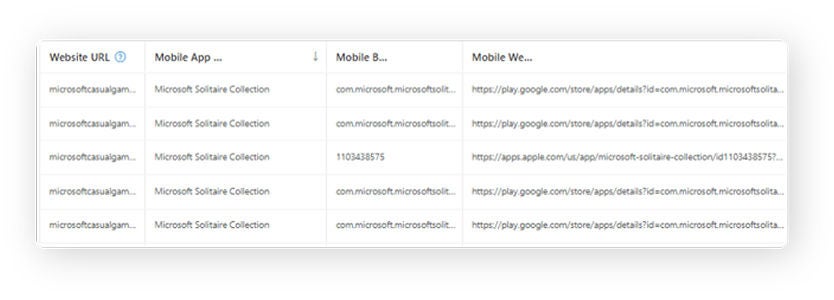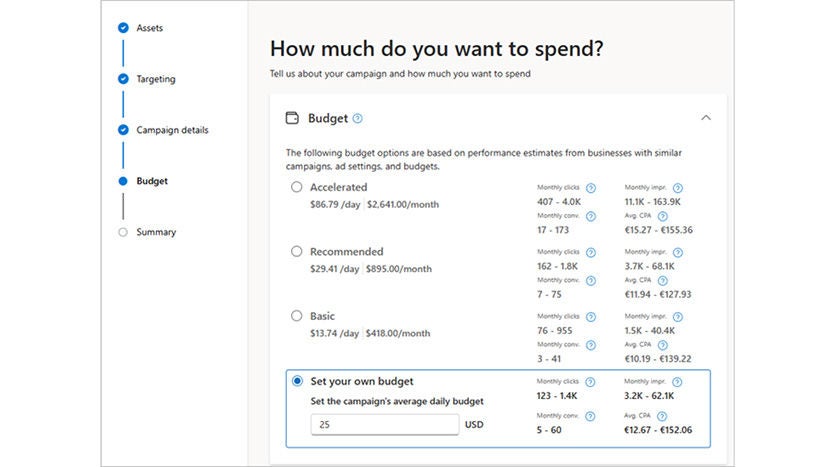Blog post
Impression-based remarketing updates and other product news for August

We’re back with Microsoft Advertising product roundup for August. Microsoft Advertising has been hard at work this summer continuing to deliver value for advertisers, both in terms of platform capabilities as well as insights and thought leadership. Since our last product update in June, we’ve shared posts on exciting topics such as how generative AI is reshaping search, groundbreaking AI ad formats, inclusive personalization with AI, and global holiday shopping trends for this year.
As far as new platform capabilities, there’s a lot to get excited about as well. Let’s dive in on how we’re helping advertisers better optimize their campaigns and drive results:
This month’s top story: Build Impression-Based Remarketing Lists from Multiple Campaigns or Ad Groups
Advertisers can now build impression-based remarketing lists using up to 20 campaigns or ad groups. This enhancement enables more comprehensive audience targeting strategies across the entire consumer funnel.
When creating lists from multiple campaigns, those that include at least one Audience campaign can be used across all campaign types. Lists without Audience campaigns remain limited to Audience campaigns only.
Learn more about impression-based remarketing setup here.

Lifetime Budgets for Audience ads
Lifetime budgets are now available globally for Audience campaigns. This feature allows advertisers to set a total campaign budget across a defined time period, helping ensure consistent pacing and performance optimization.
For those continuing with daily budgets, campaign-level start and end dates are now supported—offering more control and flexibility in campaign planning.

Lifetime budgets for Audience ads
Audience Planner: Major Upgrade for Native ads
We’ve rolled out a major update to Audience Planner for Native ads, now available globally. With a modernized design, enhanced data accuracy, and significantly improved forecasting capabilities, advertisers can plan with greater confidence and precision. Soon, we will launch support for display and online video ads—stay tuned for updates!

Audience planner for Native ads
Mobile App-Level Reporting is now live in the website URL publisher report
Advertisers can now access performance data at the individual mobile app level, replacing the previous aggregate app store reporting. This update provides greater transparency and control over mobile app placements.

Mobile app-level reporting now live in the website URL publisher report.
If you’ve previously excluded all mobile app traffic using full app store URLs (i.e. play.google.com or apps.apple.com), we recommend removing those exclusions. With app-level reporting now available, you can monitor performance for individual apps and make more targeted exclusion decisions as needed—rather than blocking all mobile app traffic.
By refining your exclusion strategy, you’ll also avoid missing out on high-quality inventory, including new Audience ads placements on King Games like Candy Crush Saga.
In addition to Audience ads, this update also applies to Search, Performance MAX, Shopping, App Install, and Lodging.
Performance Max updates: additional reporting and controls to support your campaign
For Performance Max (PMax) campaigns, we’re working to deliver new reporting and controls to support your campaign, especially as we approach the holiday season. As called out last update, advertisers can leverage new capabilities like scripts, automated rules, and much more. Now, for advertisers looking to run PMax with disclaimer ads, disclaimer support is available. In terms of reporting, advertisers can see audience insights, search terms, and assets, with segmentation of asset group reporting rolling out this month. share of voice metrics such as impression share and click share are also rolling out to PMax campaigns over the next few weeks.
Additionally, for those starting up new PMax campaigns, you’ll soon be able to get budget suggestions and performance estimates, see below:

Budget suggestions were previously available for existing campaigns, but this month they’re going to become available for new (non-feed-based) campaigns as well.
Finally, New customer acquisition goal capabilities for PMax campaigns is currently in a closed beta, and also available only for advertisers using “purchase” conversions goals. Advertisers can reach out to their account representatives if they’re interested in leveraging new customer acquisition as part of their Performance Max campaigns. We hope to see this capability roll out to all advertisers in the future.
What else is to come for Performance Max campaigns? We’re working on more experiment capabilities, channel reporting, and self-serve negative keyword support. Stay tuned for more updates to come!
Improved diagnostics on Shopping campaigns
As of this month, for those running shopping campaigns with stores, you’ll now be able to see new delivery statuses in the UI to help resolve delivery issues faster. These new delivery statuses such as “Product offers not found” or “No targeted products” will also provide recommended solutions to help you take quick action.
There’s also a new campaign diagnostic tile on the Overview page. We hope to continue to empower you with more diagnostics and recommendations as you prepare your Shopping campaigns for the holiday season!
Unlock Insights with Modeled Conversions
Lastly, we’re excited to announce the launch of Modeled Conversions for UET consent mode, a new feature designed to provide deeper insights and help advertisers better understand the true impact of their campaigns, all while respecting user privacy.
Modeled conversions use advanced modeling techniques to analyze observable data and historical trends, providing a more complete and accurate view of your conversion and revenue reporting. This is done without using personal data of non-consented end users.
What are the benefits of modeled conversions?
Improved Measurement: Helps estimate lost conversion metrics due to lack of consent.
Better Optimization: Provides greater accuracy in the conversion data used by Microsoft's bidding algorithms, enabling smarter campaign optimization.
Compliance: Ensures that user privacy choices are respected while still gaining insights.
This feature is currently available to eligible advertisers in the European Economic Area, Switzerland, and Great Britain. Learn more about Modeled Conversions here.
Conclusion
That's all for this month's roundup blog. We’ll see you back here on September 2nd with another recap of what else is to come in Microsoft Advertising. Take care!
Help us improve Microsoft Advertising
Your comments and feedback are integral to shape and improve our product. You can use the Microsoft Advertising Feedback portal, in-product feedback, X, or Instagram, and as always, contact Support.
Your input makes us better
Take our quick 3-minute survey and help us transform your website experience.





